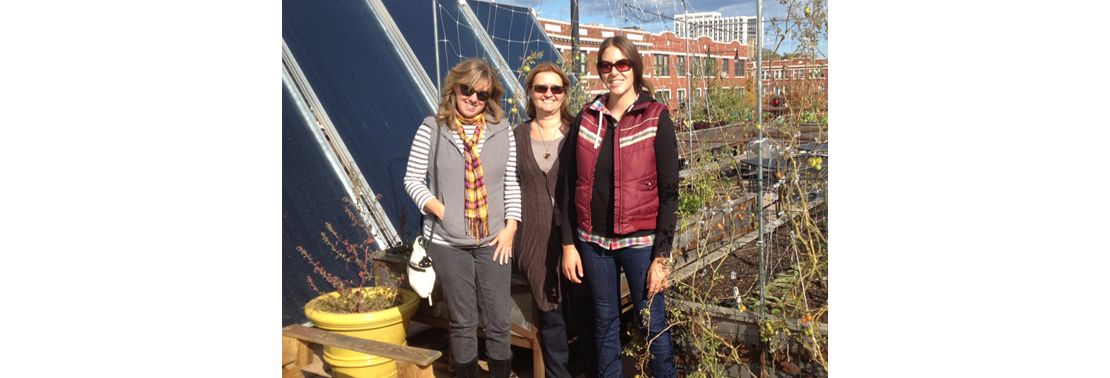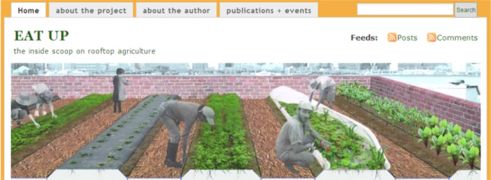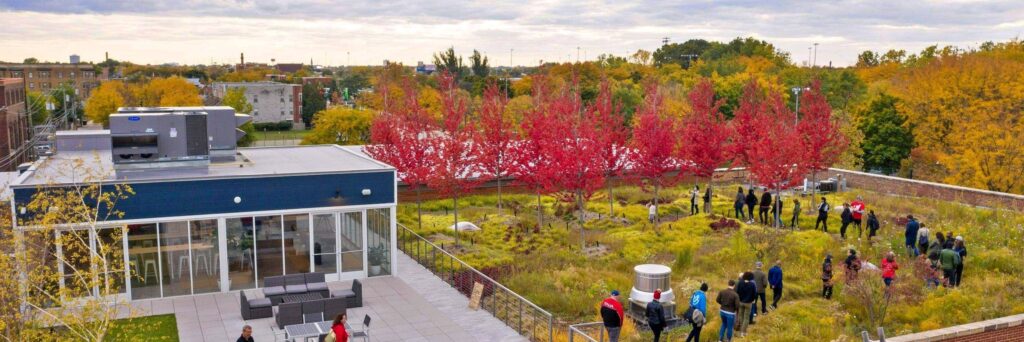All Photos by Caroline Menetre unless otherwise noted.
Not-so-recently back* (ha) from the 10th Annual CitiesAlive Green Roof & Wall Conference presented by Green Roofs for Healthy Cities and the City of Chicago
*I actually started this blog entry in November – then I don’t know what happened. Well, yes, I do – Thanksgiving and Christmas. I have no excuse for January, and then the Virtual Summit 2013 started!
It was a great conference – as usual – with training classes, informative sessions featuring expert speakers on policy, design and research topics, trade show, receptions, parties, networking, tours, and more in the wonderful city of Chicago! I’m sure Linda will blog some more on the conference – when she can catch her breath. Verrry busy at Greenroofs.com!
Speaking of Linda – she was profiled in the beautiful book The Rise of Living Architecture as one of 50 visionaries who have fueled the explosive growth of green roofs and walls over the past decade across North America. And rightfully so!
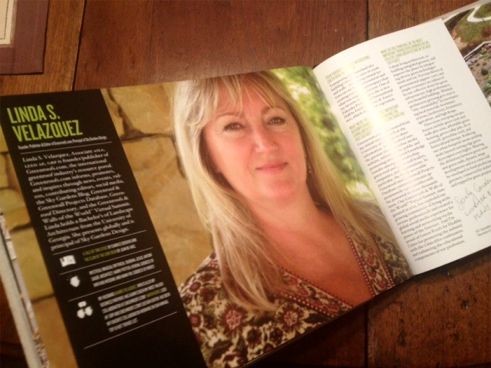
She certainly sparked my interest years ago speaking at my greenroofs class at school. The book is gorgeous, and there was a hectic book signing one day that we all took advantage of.
I mainly wanted to mention the great bus tour I had on Saturday after the conference to several green roofs around Chicago, and share some pics. (More in-depth project info can be found on Greenroofs.com Projects page, and several have been highlighted featured on the Project of the Week feature.)
The Purple Line Tour was just one of several tours offered at the conference. We left the hotel early Saturday morning with our local tour hosts Mike Curry, (Landscape Architect and Horticulturist @ Midwest Trading) and Emily Shelton (Horticulturist @ the Chicago Botanical Garden).
You could not have asked for a more beautiful day for a tour!
Evelyn Pease Tyner Interpretive Center
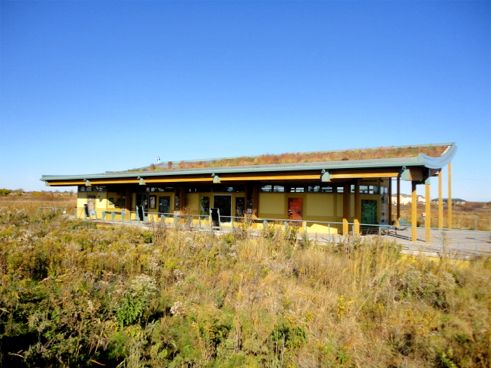
Our first stop was the Evelyn Pease Tyner Interpretive Center – where we were shown around by Tommy Hileman, Maintenance Supervisor w/Intrinsic Landscaping @ the Tyner Center.
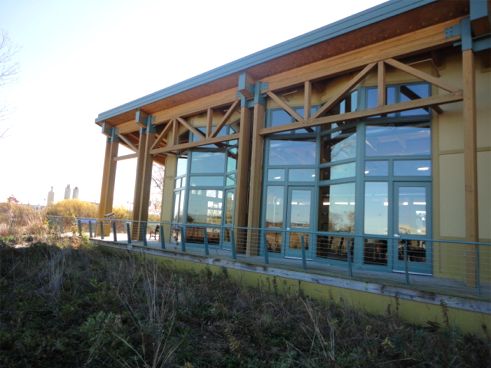
Redeveloped from a former Naval Air Station, the Village of Glenview elected to preserve approximately 14 acres of remnant prairie along with 18 acres of old field buffer habitat as the Kent Fuller Air Station Prairie. The “Inside-Out” approach integrates the building into the prairie almost as if it were an organic element.
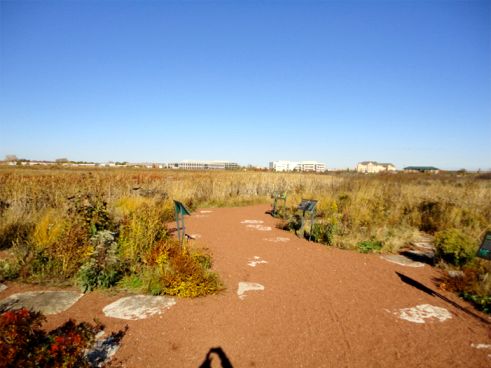
The LEED Platinum certified building features a 4,000 sf green roof and permeable pavement, solar slates, and a geothermal system. The use of these features, along with the surrounding native vegetation of the site, significantly reduces the amount of stormwater runoff from the site.
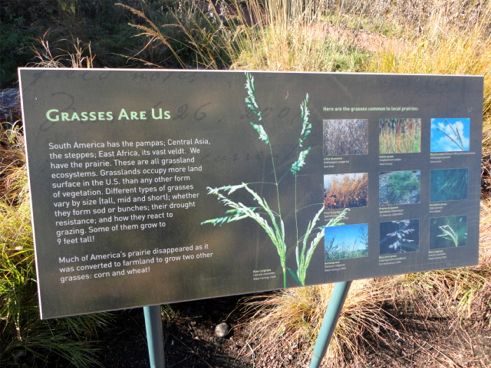
The Evelyn Pease Tyner Interpretive Center provides groups and individuals with educational opportunities during both formally scheduled and informal visits. Even when closed, the Tyner Center fulfills an educational function, as interpretive signs and displays are accessible from the building’s exterior, as well as teaching gardens and walking trails, which we got to enjoy.
Chicago Botanic Garden
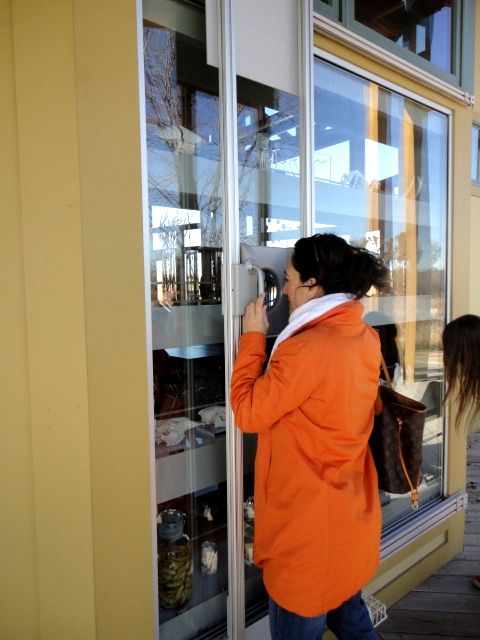 Next on the tour was the Chicago Botanic Garden. I was very excited about this stop since I had never been. Emily Shelton, Horticulturist @ Chicago Botanic Garden, showed us around her “home base,” naturally!
Next on the tour was the Chicago Botanic Garden. I was very excited about this stop since I had never been. Emily Shelton, Horticulturist @ Chicago Botanic Garden, showed us around her “home base,” naturally!
(By the way, you can see Emily in action now on the Chicago Botanic Garden green roof at the Virtual Summit 2013 going on through April 13 – she is part of the Award Winning Designers Sharing Projects & Lessons Learned video presentation.)
The Daniel F. and Ada L. Rice Plant Conservation Science Center features a green roof that underscores the Garden’s commitment to plant conservation. Combining practical benefits with aesthetic appeal, the Green Roof Garden also provides an opportunity for research and education, serving as a living laboratory.
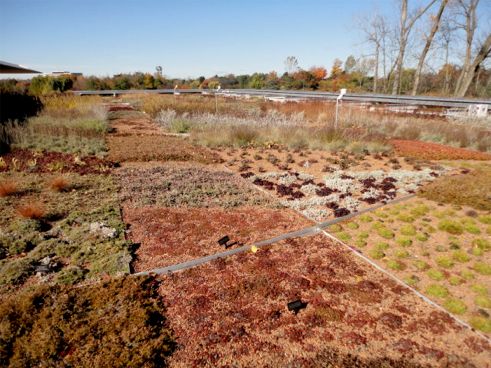
Serving as an outdoor classroom to thousands of Garden visitors annually, the 16,000 sf green roof is accessible to the public via a grand staircase, and an overlook with interpretive panels educates visitors about all aspects of rooftop gardens.
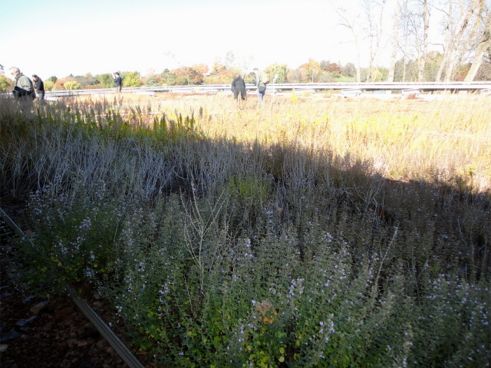
Two distinct areas serve specific functions: the Ellis Goodman Family Foundation Green Roof Garden South features regional and national native plants, many of which are not currently used as rooftop plants; the Josephine P. & John J. Louis Foundation Green Roof Garden North features a mix of plants known as good green roof plants, plus native and exotic plants that have potential for green roof use.
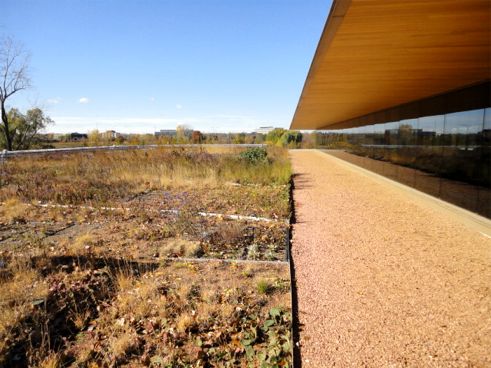
Generally, the plants are sun loving, drought tolerant, have a shallow root system, and can withstand windy conditions.
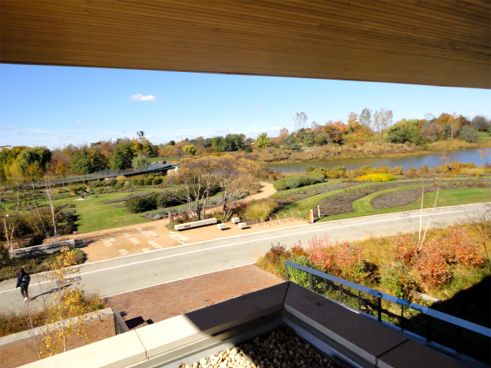
The growing medium consists of a mixture of expanded clay and shale, vermiculite, perlite and some sand with about 5% organic matter consisting of mostly mulch. An area also contains some GreenGrid modules for easy testing. Nesting Killdeer have established themselves on the roof along with visiting bees, butterflies and even hummingbirds.
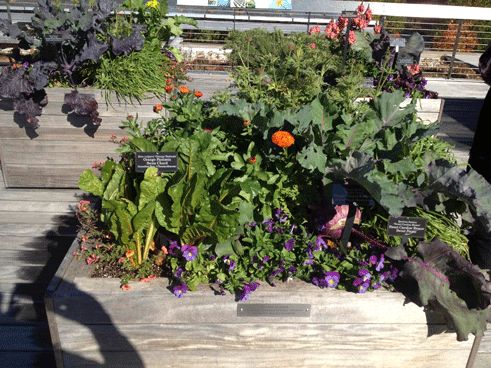
We learned the green roof is growing and evolving after 3 full growing seasons. Despite the challenging weather of 2011 and 2012, the vast majority of the 240 taxa currently on the green roof have thrived. While their goal is to minimize the care and resources put into maintaining the roof, they had to give the plants supplemental water once in July 2011 and twice in June 2012 during periods of extreme heat and drought.
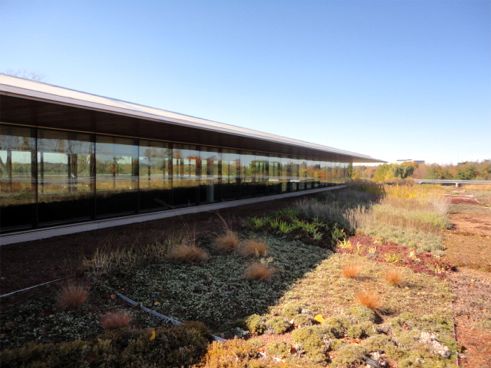
Not surprisingly, the greatest stress was on plants in the shallow 4-inch-deep plots. But the great news is that plants rebounded quickly once they received the additional water.
Church Street Station
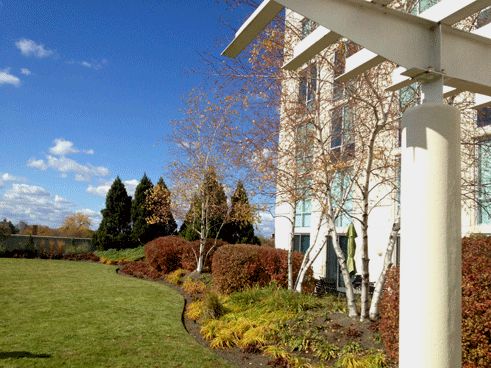
Next stop was Church Street Station in Evanston, Illinois. Greg Raymond, Managing Partner w/Eco Gardens @ Church Street Station, met us on the property and took us up to the beautiful 5th floor green roof.

Focus Development wanted to build their 17-story postmodern Church Street Station Condominiums not only with beautiful interiors but also to be a place that their customers would love to call home.
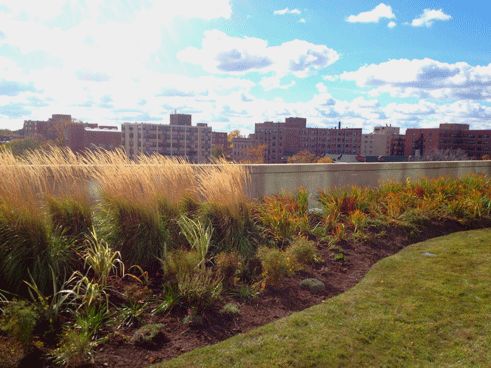
They also had future needs in mind by putting in a garden roof where condo owners could go to get away from the day-to-day stresses.
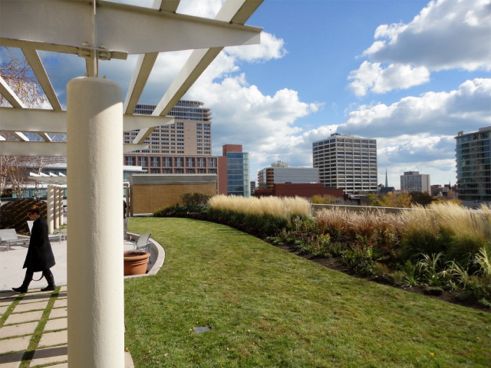
American Hydrotech provided the Garden Roof Assembly, which is a seamless, hot-applied rubberized asphalt membrane that provides long-lasting protection and incorporates a minimum of 25% recycled materials along with retaining moisture, irrigating the vegetation from the underside, helping to recreate the plants’ natural growing environment on the roof.
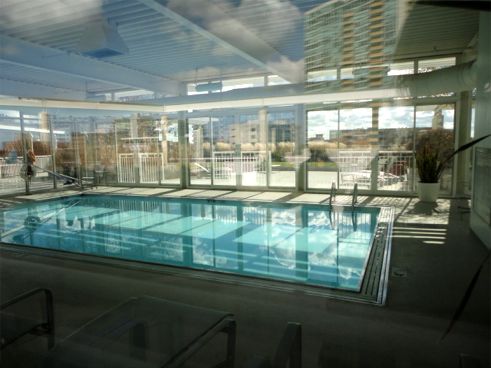
Adding natural beauty to the 5th floor roof atop the residents’ parking structure, this 8,500 sf garden roof sits alongside a beautiful pool and fitness room.
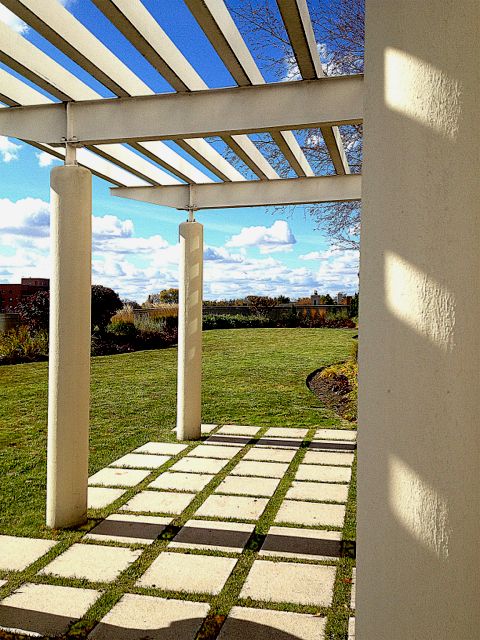
Birch, maple and evergreen trees, tall grasses, and flowering shrubs and perennials create a naturalistic backdrop to the lush lawn and beautiful arbors, making the garden roof a benefit for the building owner, its occupants, and the whole neighborhood.
I loved this roof and think I took some great shots. The white of the birch trees, arbors and building columns were a beautiful contrast against the blue sky that day.
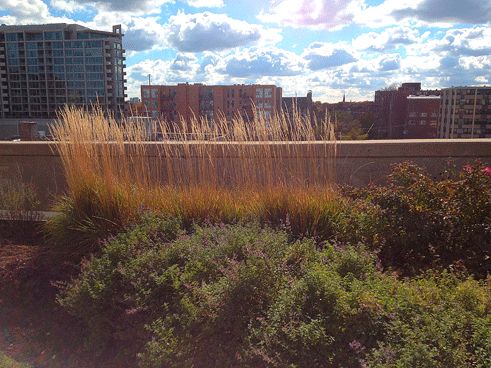
Uncommon Ground Restaurant
By the time we left the Botanical Garden, it was close to noon. Our tour guides brilliantly planned the next stop to include lunch – at the wonderful Uncommon Ground Restaurant at 1401 W. Devon. I had the pleasure of hearing Helen Cameron, co-owner of Uncommon Ground, at one of the conference tracks just a day before and I was very impressed with her, and couldn’t wait to eat at the “World’s Greenest Restaurant” and see the “First Certified Organic Roof Top Farm in the Country.”
(You can also hear from Helen Cameron at the Virtual Summit 2013 – she is part of the Skyrise Ag: 5 Ways to Local Food Production” with Helen Cameron, Mohamed Hage, George Irwin, Ben Flanner and Alan Joaquin video presentation.)
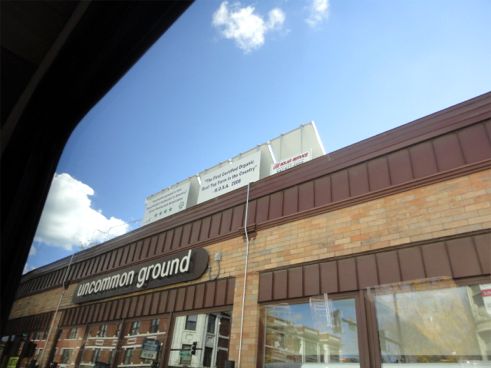
Due to an early flight that day – I was very bummed – I had to rush through the (delicious!) lunch and tour. But Helen herself graciously had my order put in ahead of, not only our tour, but a lot of the packed restaurant patrons so I could make my flight. Then she gave me my own private rooftop tour – so sweet of her!
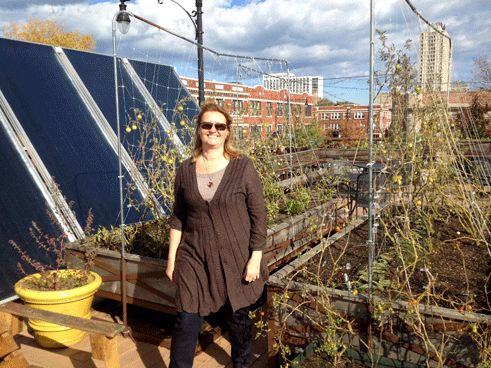
(Keep in mind when we were there in October 2012 it was the end of summer crops.)
Helen and her husband Michael purchased the property in Chicago in June of 2007, and did an extensive rehab on the single story (existing) restaurant. It was their intention from the start to build an organic production farm on the roof, and the brick load-bearing walls were reinforced to hold steel beams, which support a roof top deck made of the composite material that is a combination of recycled plastic and wood, designed by LEED AP architect Peter Moser of Swiss Design Group.
Plumbing was brought to the roof for planter box irrigation. Excess water from the roof is collected in rain barrels and is used to water the ground level plants.
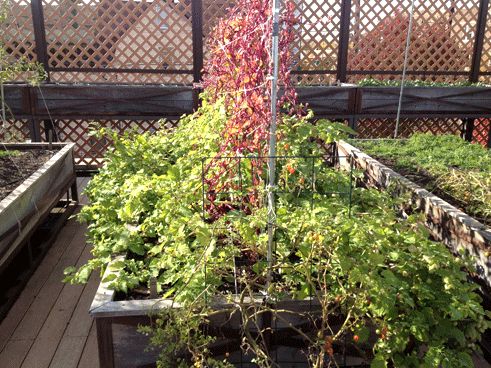
Their menu features a wide variety of the freshest, in-season selection of veggies, fruits and herbs grown and harvested right from the roof and curbside planters. (There is also honey from their own beehives.)
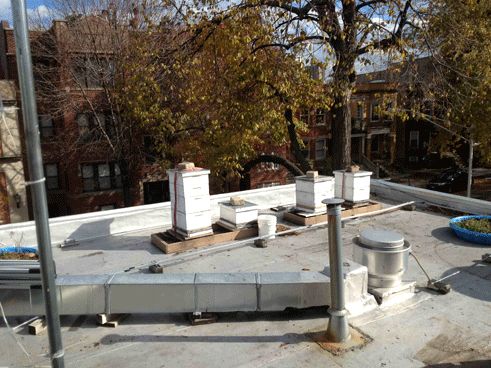
Uncommon Ground also capitalizes upon its ability to grow specialty crops that are relatively unattainable by other storefronts. Most guests flock to Uncommon Ground because the food simply tastes too good to be true! What is not grown themselves is purchased from sustainable farms in the region, with whom they develop relationships through regular visits.
Some of the organic plants that are rotated through the raised beds over time include: varieties of sweet and hot peppers, varieties of eggplant, lettuces, heirloom tomatoes, radishes, beets, okra, spinach, fennel, mustard, bush beans, and shallots. Herbs include: rosemary, thyme, chives, garlic chives, tarragon, sage, parsley, dill, mint, lavender, basil, anise hyssop, etc…
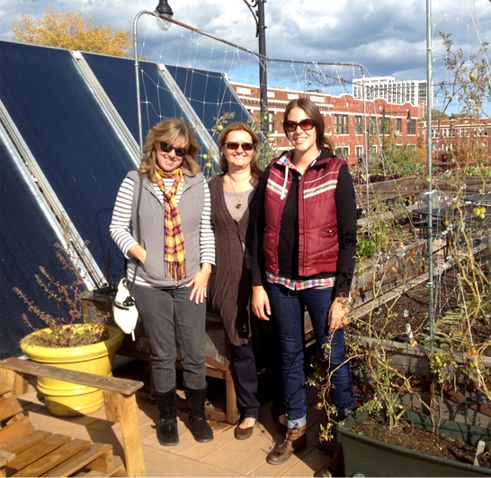
There is so much to love about this urban eatery and rooftop organic farm – I can’t begin to mention it all. I wish I could have spent more time and not been rushed – but all I can say if you are in the area – visit their restaurant(s)! And also visit uncommonground.com for their green fact sheet and more.
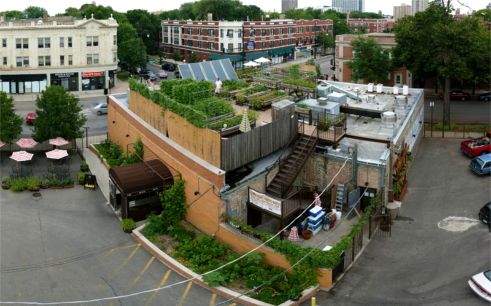
And while we’re on the subject of urban ag- check out eatupag.wordpress.com – the blog by Lauren Mandel of Roofmeadow and also the book released this spring.
At this point I had to leave our Purple Line Tour and head to the airport, so I missed the last stop with Aaron Durnbaugh, Director of Sustainability @ Loyola University. (Perhaps another tour member can blog about it!)
I do want to thank Mike and Emily for heading up this tour and was so glad I got to take some time on Saturday to participate. The tours are always such a great part of the annual CitiesAlive Conference and Trade Show.

I’m really looking forward to San Francisco!
Best,
Caroline
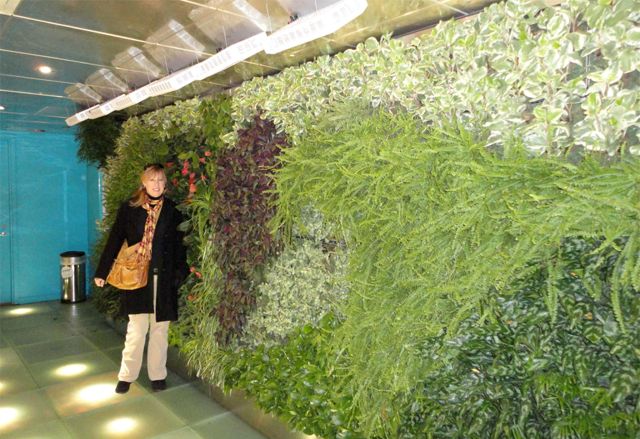
Publisher’s Note: Our lovely Caroline Menetre Totten passed away in 2016; read her In Memoriam.
 Greenroofs.comConnecting the Planet + Living Architecture
Greenroofs.comConnecting the Planet + Living Architecture
